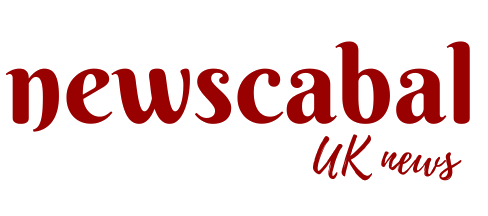Colossal Biosciences founder Ben Lamm is working to revive the woolly mammoth and the dodo – but he wants to make clear the ending will be different to that of Steven Spielberg’s gory dinosaur epic Jurassic Park.
“People have to remember that that was a movie, right?” the serial entrepreneur sighs, sitting in the Hard Rock Cafe on the fringes of the World Economic Forum in Davos – a little outpost of America in the swank Swiss resort.
“We’ve also seen, like, Ready Player One [another Spielberg movie] and that doesn’t exist, but, people are like, ‘didn’t we see how [Jurassic Park] ended?’ Like, yeah, it was a scripted ending. So I’ll go do a scripted show, and I’ll make the ending great, and then you guys can talk about that!”
Colossal Biosciences, Lamm’s latest company, which has labs in Dallas, Texas, Cambridge, Massachusetts and Melbourne, Australia, recently announced that it had completed a $200m funding round. Past investors have included Lord of the Rings film-maker Peter Jackson. He reiterates the company’s claim that it hopes to bring the first woolly mammoth calf into the modern world – born to a surrogate elephant mother – by late 2028. “We’re still on track for that, which is amazing,” he says.
The company is simultaneously working on giving birth to animals using artificial wombs in a lab: something Lamm says they may achieve with a small mammal, perhaps a mouse, within two years.
It is this latter process that Lamm hopes could be used to protect existing animal species, such as the vanishingly rare northern white rhino, from dying out. Alongside the mammoth and the dodo, he also hopes to revive an extinct Tasmanian marsupial called the thylacine.
Despite his determination to repudiate the ending, Lamm concedes that there are distinct parallels between the fictional process of bringing velociraptors back from the dead in the Jurassic Park films and his eye-catching “de-extinction” projects. Like the scientists in the Spielberg classic, experts at Colossal Biosciences start out with samples of the creatures’ DNA – not gathered from mosquitoes preserved in amber, but from historical specimens.
“First you have to get ancient DNA, right, and that exists sometimes in museums, sometimes in the field. A lot of researchers have actually already done the work. So we work with the top ancient DNA researchers in the world.”
Instead of filling the gaps in these genetic samples with frog DNA, as Spielberg’s researchers do in the movie, Lamm’s team start with the closest living relative to the beast they are trying to bring back from the dead. “In the case of the mammoth, that’s the Asian elephant: it’s 99.6% the same genetically,” Lamm says. “Then you do comparative genomics, using AI, to understand, what genes are there? What genes are persistent and what are the characteristics of those genes?”
They then take an elephant cell and “engineer in” the specific genes that are essential to the mammoth, using a process called somatic cell nuclear transfer, pioneered in Edinburgh, where Dolly the famous sheep was cloned, back in 1996.
“Like the sheep: only now we use robotics and lasers. Back then they were using, like, this,” he says, picking up a table knife and gesturing. “The fact that Dolly worked was a miracle!”
For birds, the process is different, and the task of restoring the dodo is less advanced. “We’re in the editing phase on cells on both the mammoth and the thylacine, which is awesome. We’re not quite there on the dodo yet. We’re still doing the computational biology work,” he says, suggesting they hope to announce more progress in the next six months or so.
Lamm’s dream is ultimately to create herds or flocks of species that would roam free – in Madagascar, in the case of the dodo, or, for woolly mammoths, across the frozen plains of the Arctic tundra. Asked whether vast tusked mammals wouldn’t just destroy everything in their path, he points to research suggesting that restoring such “keystone herbivores” may actually help the wider environment. “What everyone generally agrees is that a more biodiverse ecosystem is a healthier one: so one with predators, one with large megafauna, one with large herbivores.”
He adds: “With all the species that we’re working on, we were working with indigenous people, groups, private landowners and governments to put them back in the wild in their natural habitats.”
Many tech founders turn to passion projects at a certain stage in their career: for Bill Gates, tackling malaria and other preventable diseases; for Elon Musk, apparently, running parts of the US government.
Lamm’s successful startups were on a smaller scale, but he has already co-founded and sold five companies, giving him the financial leeway to follow his enthusiasm for restoring long-forgotten species. These companies included Conversable, which he calls a precursor to large language models, and the creative software company Chaotic Moon Studios, which was bought by Accenture in 2015.
“My background is building technology companies,” Lamm says. “And then I met a guy named George Church. George is, like, the father of synthetic biology. He’s the guy, and this was his idea.” The veteran Harvard professor told Lamm that if he could work on any project, it would be bringing back the mammoth – and using the same techniques to aid conservation. “I was like: let’s do that!” he says.
Lamm stresses that bringing back extinct mammals is not just a philanthropic pursuit. Colossal Biosciences plans to make the tools it develops with application to conservation available for free. But it has already spun out two businesses and Lamm says it will do so again, potentially as soon as this year, where its work creates stand-alone technologies that may be commercially viable.
Whatever the economic benefits, however, Lamm says he hopes that if his implausible-sounding project succeeds, it will inspire a new generation of would-be biologists.
“Every single week, we get, like, little kids drawing pictures of dodos or mammoths, and their parents sending us a thing saying ‘thank you for doing this. You’re making science cool’,” he says. “If we can put synthetic biology in the hearts and minds and homes of people, change people’s perspective, maybe, maybe we get one less influencer and one more scientist, right?”
CV
Age 43
Family “I have a great family. I love them – and I prefer to keep their details private.”
Education Baylor University, Texas, and studied finance and accounting.
Last holiday “I took my extended family to Turks & Caicos over new year. We rented an amazing house on Grace Bay.”
Best advice he’s been given “Don’t take advice. A mentor once told me just keep doing what you are doing and follow your own path.”
Biggest regret “I had an opportunity to buy an insane island property in 2020 for a steal, given Covid, but passed on it.”
Phrase he overuses “‘More is more.’ I always want more from my team, my life, myself.”
Ways he relaxes “Vacation at the beach, read books by pool, make playlists and listen to music, hydrogen baths, red light therapy, running.”









